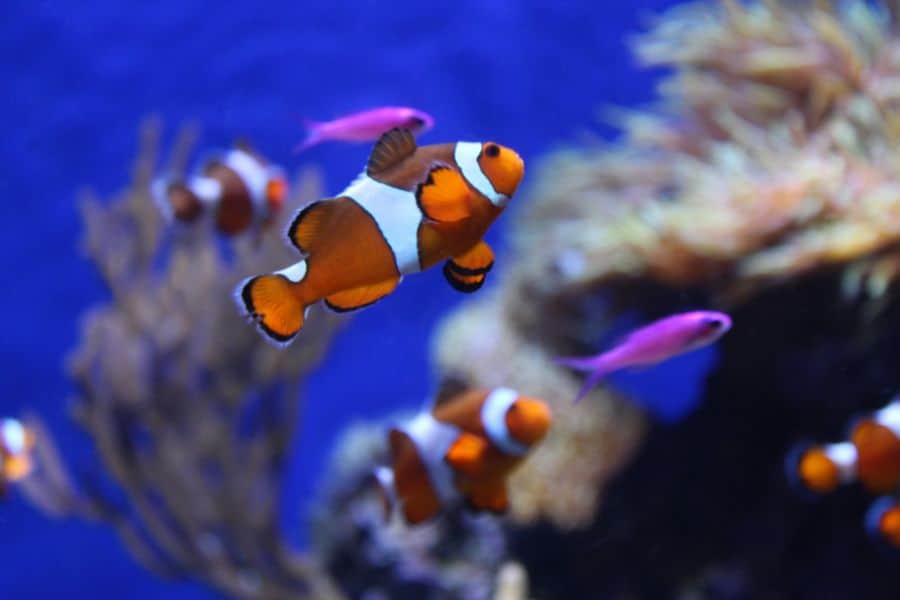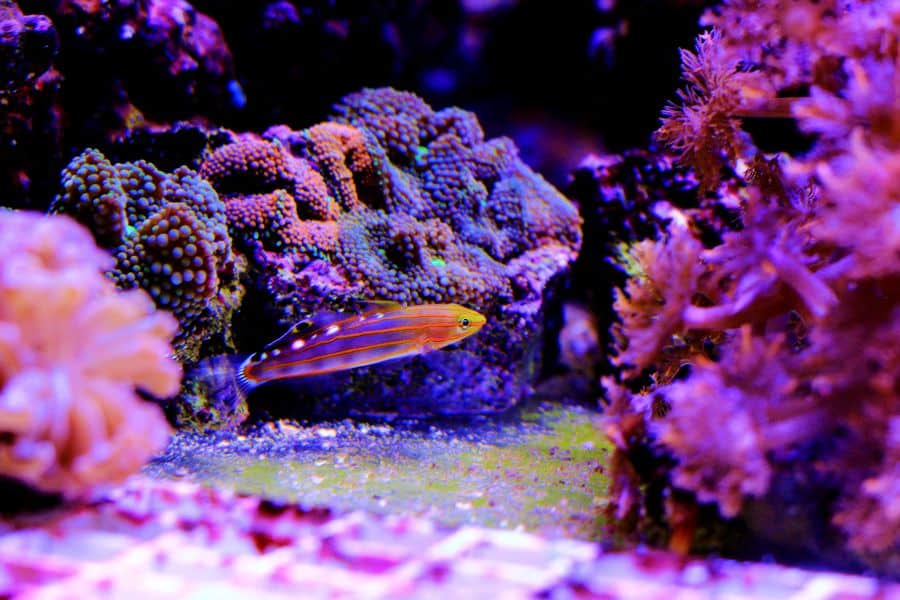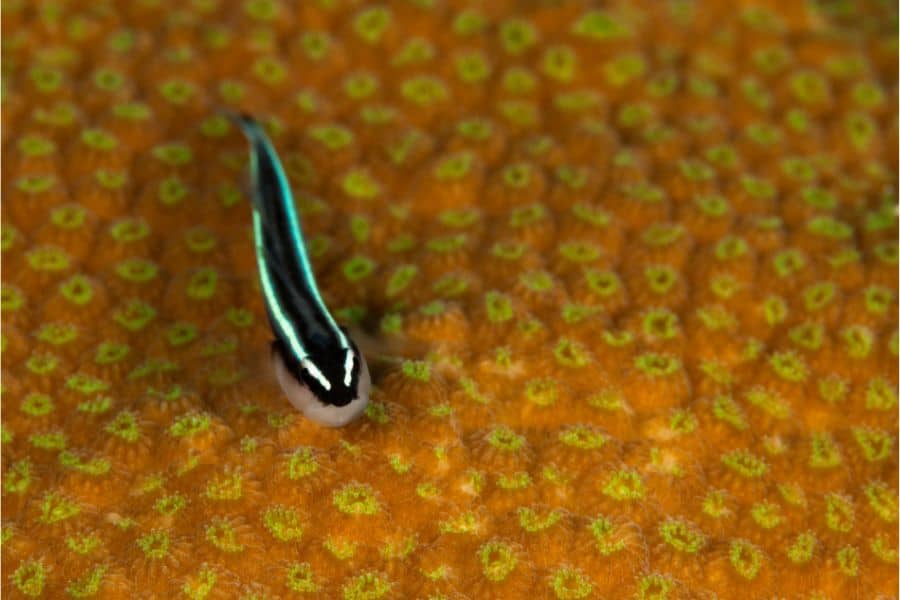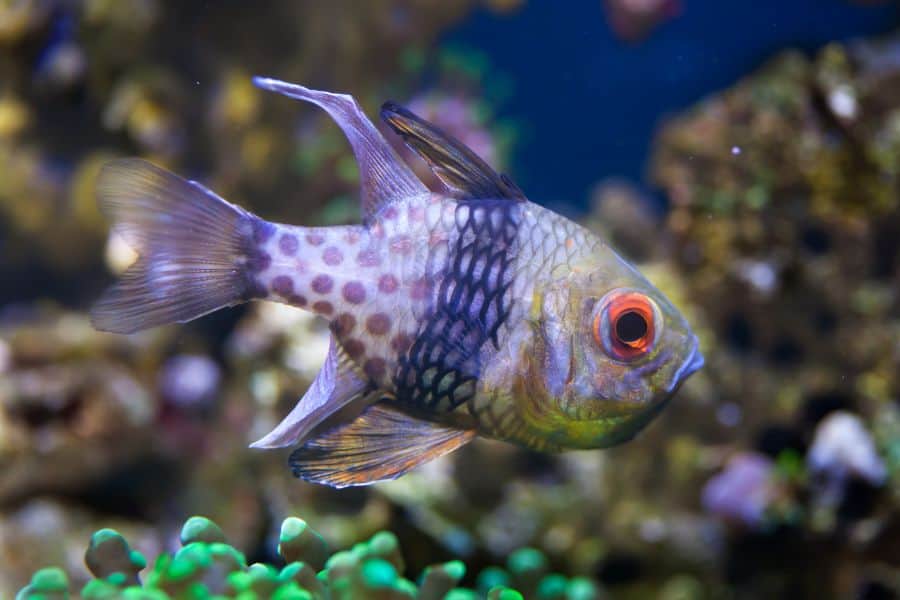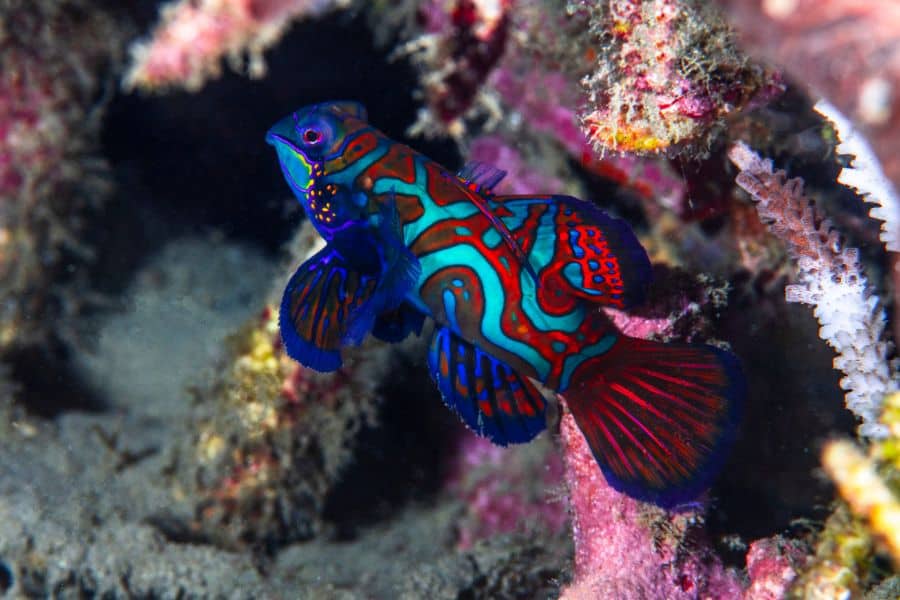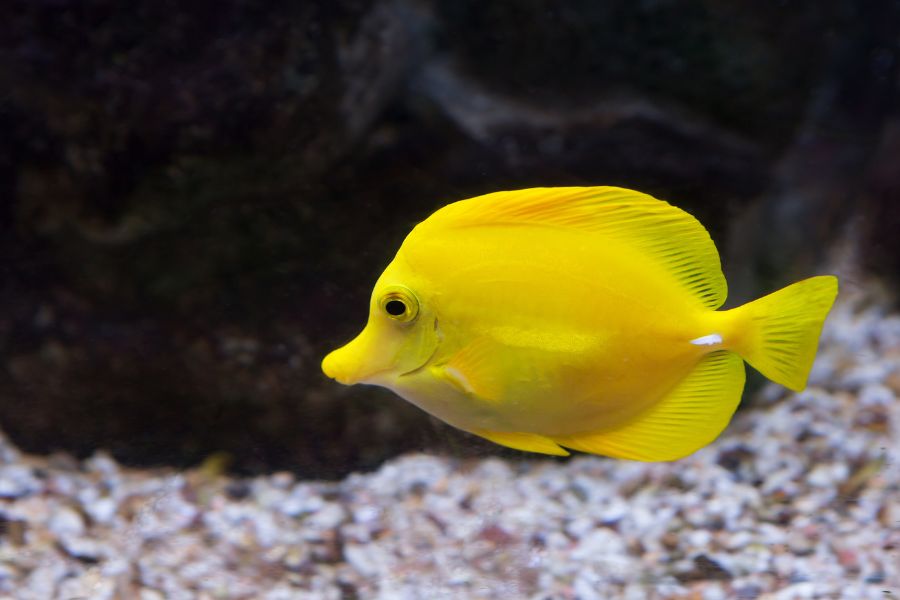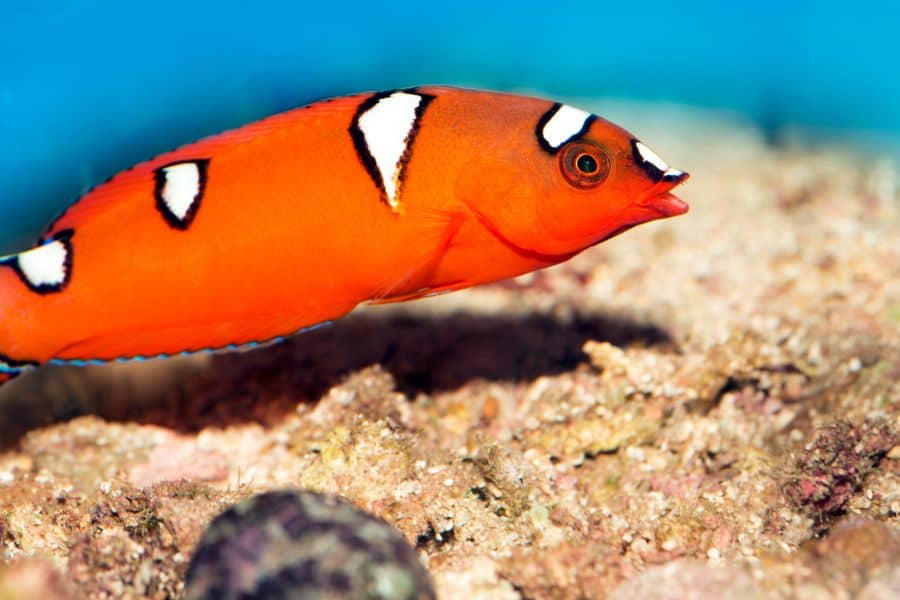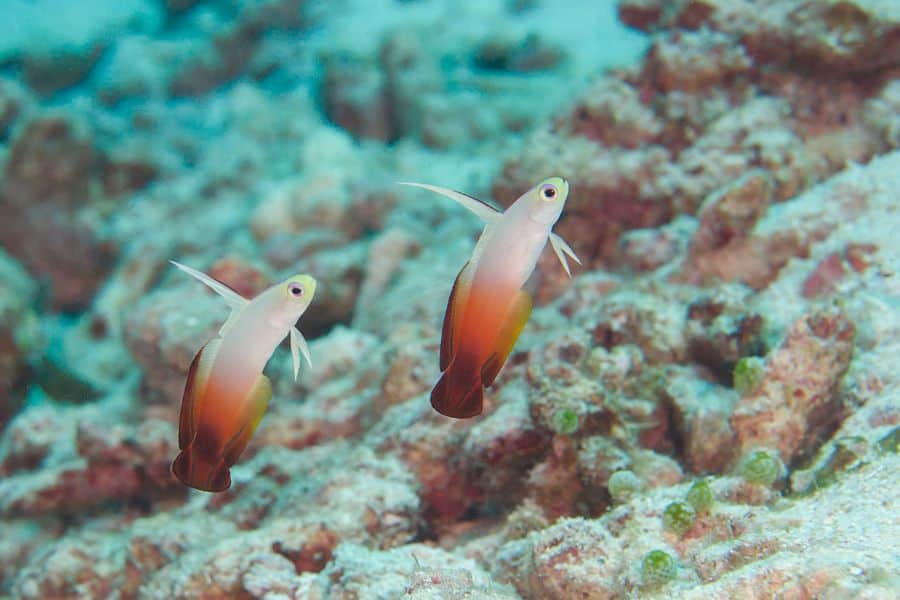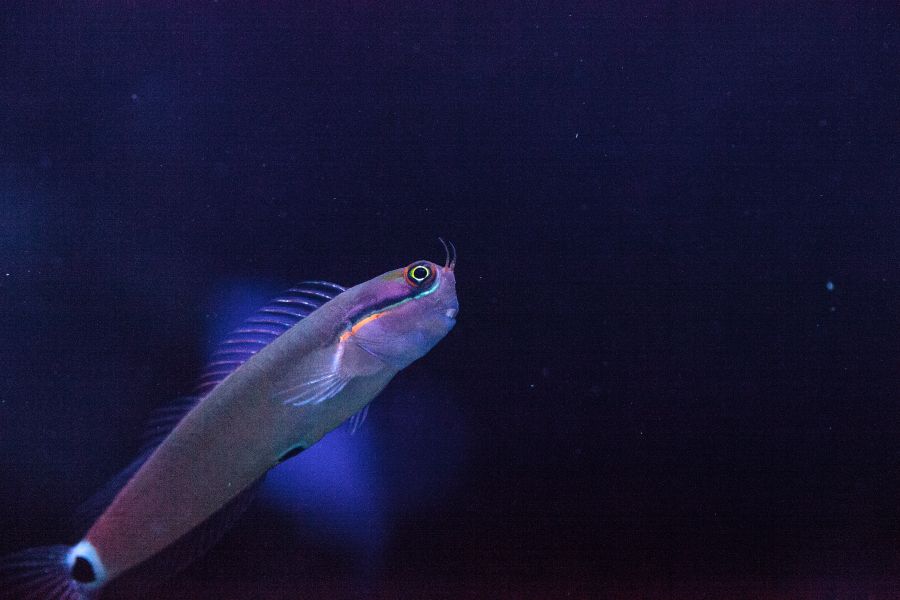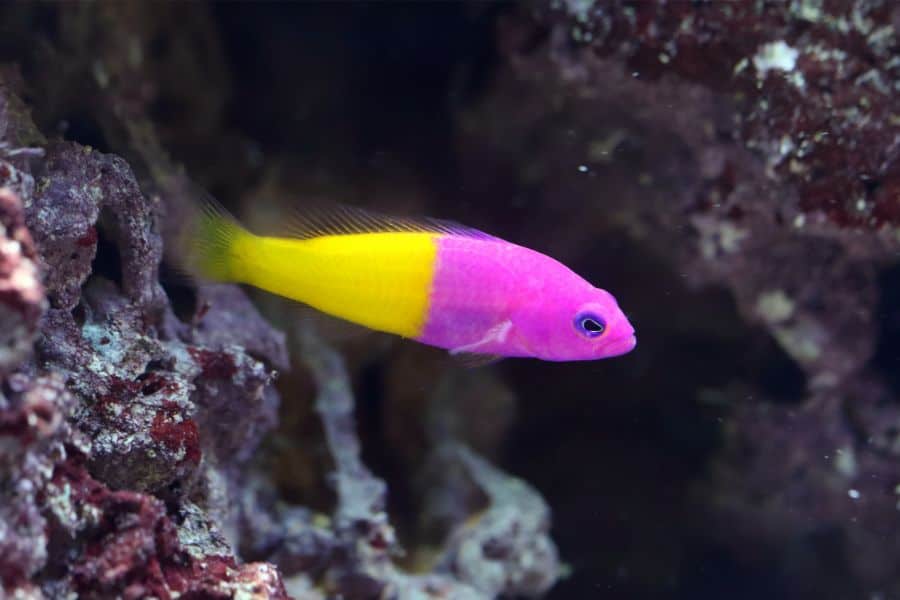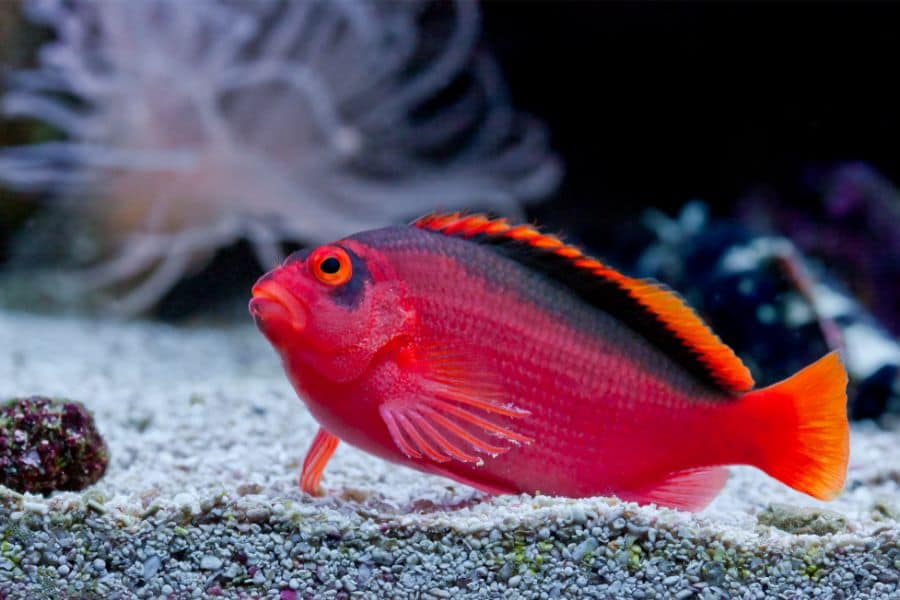Clownfish is one of the renowned saltwater aquarium fish. They are so popular that even kids know them and have been the main star in an animated Hollywood film.
We often see Clownfish living and swimming in the stinging tentacles of sea anemones. Stinging tentacles? Yes, clownfish are immune to the sea anemone sting due to the mucus coating on their skin.
With their close living relationship with sea anemones and their special immunity to their sting, can Clownfish have compatible tank mates?
Join us in this article and become familiar with the best tanks for Clownfish and the traits that make them compatible.
Ideal Traits for Clownfish Tank Mates
Not all saltwater aquarium fish are compatible with Clownfish. Remember that Clownfish are small-sized fish, and without the protection of sea anemones, they are exposed and prone to bullying and predation.
For a harmonious coexistence, a tank mate for Clownfish must have the following traits:
Non-Territorial
Clownfish are highly territorial. Although occasionally wandering out, its main territory is within the tentacles of the sea anemone they are with. By all means, they will defend it from any invaders, including other Clownfish species trying to snatch their refuge.
To avoid competition for space, a perfect Clownfish tank mate should be non-territorial. Aside from this, having a non-territorial tank mate encourages your Clownfish to roam outside the comforts of their sea anemone and socialize with other fish.
Peaceful Behavior
Being territorial means being protective of its territory. But for Clownfish, it means more since they are also aggressive. They will chase and bite whoever comes close to their refuge.
On top of being non-territorial, a Clownfish tank mate should be non-aggressive and generally have peaceful behavior.
If you choose an aggressive tank mate for your Clownfish, expect both fish will fight until one becomes dominant. And in becoming the dominant fish, other fish become submissive and unsociable.
So, can you imagine if this happens to your Clownfish or to the tank mate you have chosen? Not a healthy coexistence.
Related Size
Clownfish are small. Depending on the species, their growth can only reach anywhere from 5 to 15 cm (2 to 6 inches) long. If you want them to be one of the centerpiece stars of your tank, then only select a tank mate that has a similar size. The smaller, the better.
Keeping a small-sized fish that is both territorial and aggressive (like Clownfish) is not a good idea if they are around large fish. Their aggression would only trigger larger fish to feed on them, and this is especially true if the tank mate you choose is also a predator (like groupers).
Similar Water Parameters
Different fish require different water parameters, and in the case of Clownfish, they cannot easily adapt to sudden changes. It is important you choose a tank mate that thrives within their range of water parameters.
For cross-referencing to the tank mate you choose, here are the water parameters required for optimal Clownfish growth:
| Parameter | Range |
| Water temperature | 24 to 27 C (75 to 80 F) |
| Salinity | 1.020 to 1.024 |
| pH | 8.0 to 8.4 |
| Lighting | Moderate |
| Water flow | Moderate |
The Best Tank Mates for Clownfish: At A Glance
Here is a rundown of the best tank mates for Clownfish based on compatibility.
| Name | Compatibility Checklist | |||
| Non-territorial | Peaceful | Size | Water Parameters | |
| Court Jester Goby | ✓ | ✓ | ✓ | ✓ |
| Neon Goby | ✓ | ✓ | ✓ | ✓ |
| Pajama Cardinalfish | ✓ | ✓ | ✓ | ✓ |
| Mandarin Fish | ✓ | ✓ | ✓ | ✓ |
| Yellow Tang | ✓ | ✓ | ✓ | ✓ |
| Red Coris | ✓ | ✓ | ✓ | ✓ |
| Magnificent Dartfish | x | ✓ | ✓ | ✓ |
| Tailspot Blenny | x | ✓ | ✓ | ✓ |
| Pygmy Angelfish | x | x | ✓ | ✓ |
| Royal Dottyback | x | x | ✓ | ✓ |
| Flame Hawkfish | x | x | ✓ | ✓ |
The Best Tank Mates for Clownfish
Court Jester Goby
Scoring 4/4 on the compatibility checklist, what more can you look for with the Court Jester Goby (Amblygobius hectori) as a tank mate for Clownfish?
Aside from being shy and peaceful, the Court Jester Goby are small, only growing up to 8 cm (3 inches) long, making them perfect for a 10-gallon saltwater tank.
Just be aware of their small size as it can be enticing for larger fish to prey upon them.
Neon Goby
The Neon Goby (Elacatinus oceanops) is another perfect tank mate for Clownfish raised in a 10-gallon saltwater aquarium. They are peaceful, non-territorial, and smaller than most Clownfish species.
Although they are hardy and easy to care for, you have to watch if there are two or more Neon Gobies in your tank. When they reach sexual maturity, they start to pair up and will establish a territory for mating and breeding, and this time, they may become aggressive.
Pajama Cardinalfish
Another tank mate for a 20-gallon aquarium that has a perfect compatibility score with Clownfish is the Pajama Cardinalfish (Sphaeramia nematoptera).
Similar to the Court Jester Goby, the Pajama Cardinalfish is generally peaceful and small, growing only 8 cm (3 inches) long. Although semi-aggressive, they only show aggression to fish of the same or smaller size.
Pajama Cardinalfish love to stay midwater and often take refuge under coral or any object that provides shade. Their fins are always erect and please do not consider this a sign of aggression since it is their natural behavior.
Mandarin Fish
Consider having the Mandarin Fish (Synchiropus splendidus) as a tank mate for Clownfish kept in a one-year-old 30-gallon tank with rocks formed like a miniature reef.
Mandarin Fish and Clownfish are perfect tank mates. Both are small in size and peaceful. Aside from being non-territorial, Mandarin Fish will not invade your Clownfish in the Sea Anemone they are living with since they are bottom dwellers and occupy a different section of the tank.
The reason why Mandarin Fish require at least a year old rock is because of their diet. They mainly feed on copepods and these microscopic zooplankton often converge in mature reef rocks.
But it doesn’t mean you can no longer place Mandarin Fish in a tank with immature or underaged rocks. You still can, but you need to give supplements, like brine shrimp. In this way, you are supplementing both your Mandarin Fish, your Clownfish, and your Sea Anemones.
Yellow Tang
The Yellow Tang (Zebrasoma flavescens) is a recommended Clownfish tank mate, especially if you keep them both in a 50-gallon saltwater aquarium.
When they reach sexual maturity, this yellow-colored fish has a similar size to Clownfish.
Although they are non-territorial, they can become semi-aggressive and this is particularly true for male Yellow Tangs getting confrontational to newly introduced fish.
With this, stocking your Clownfish and your Yellow Tang at the same time is crucial.
Red Coris
A 100-gallon marine aquarium is a decent size tank for a home setup. If you have this kind of system, we recommend adding Red Coris (Coris gaimard) to your Clownfish.
The Red Coris is slightly larger than any Clownfish, reaching a maximum size of 20 cm (8 inches). They require a lot of space since they love to swim around and thrive in a tropical water setting.
Although they are gentle and peaceful in their juvenile stage, they can be aggressive as they turn into adults. But do not worry, Red Coris are less aggressive than your Clownfish. As long as your Red Coris is well fed, they will not mind and disturb other fish and will go away whenever your Clownfish wander out of their sea anemone.
Magnificent Dartfish
Also known as the Firefish Goby, the Magnificent Dartfish (Nemateleotris magnifica) are highly territorial. Fortunately, being territorial poses no threat to your clownfish as they live in burrows.
Knowing this, provide your tank with a sufficient sandy substrate where these 5 to 8 cm (2 to 3 inches) long fish are known to dig out and create a tunnel shelter.
If you decide to have two or more Magnificent Dartfish in a single tank, be reminded in advance that they can become aggressive toward their own species, especially if their burrows are situated near each other.
Tailspot Blenny
If only they were non-territorial, then the Tailspot Blenny (Ecsenius stigmatura) can be a great tank mate for Clownfish in a 10-gallon aquarium. However, since they do defend their territory, we recommend keeping them in a larger tank, like a 20-gallon aquarium.
The Tailspot Blenny is one of the smallest Blennies growing only up to 8 cm (3 inches) long. But despite being small, they are fun to look at. Within their territory, they dug out several holes in the substrate and they are often seen coming in and out of their tunnel refuge.
Pygmy Angelfish
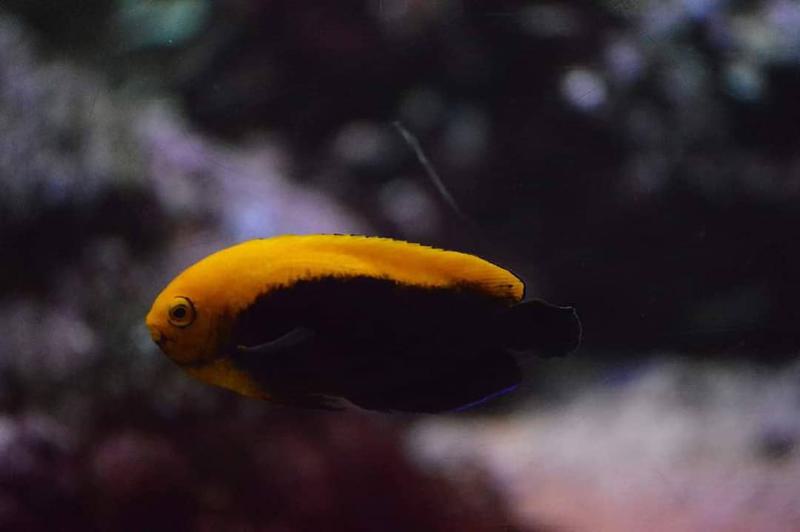
Another tank mate option for Clownfish kept in a 50-gallon tank is the Pygmy Angelfish (Centropyge aurantonotus).
Although they do not have a 4/4 score on the compatibility checklist, Pygmy Angelfish are still great tank mates for Clownfish.
Despite being territorial and aggressive, their size is relatively small ranging from 5 to 8 cm (2 to 3 inches) long. They are smaller than most species of Clownfish and Pygmy Angelfish are only fierce towards species of similar size.
But again, you should always take note of their aggression and be mindful in placing the right fish size since some Clownfish have a similar size to them, like the Orange Clownfish (Amphiprion percula).
Royal Dottyback
Royal Dottyback (Pictichromis paccagnella) is another reef fish that scores low on the compatibility checklist, yet still compatible with Clownfish.
They are aggressive and territorial. But they only do this to ensure they have enough food to eat. To prevent aggression, make sure to provide them with sufficient food.
Aside from the aesthetics they contribute through their bright pink and yellow colored bodies, these small sized fish measuring 8cm (3 inches) long are preferred by beginners since they are hardy and can tolerate minor fluctuations in water parameters.
Flame Hawkfish
If you have a Clownfish housed in a 40-gallon aquarium and want to add more fish, consider keeping along the Flame Hawkfish (Neocirrhitus armatus).
The territory of Flame Hawkfish is situated near the substrate or a rock and they often defend it against intruders. Although the Flame Hawkfish is both territorial and aggressive, they still get along with Clownfish.
The only time they get into an intense chase is when the Flame Hawkfish comes too close to the Sea Anemone of a Clownfish. In most cases, the Clownfish will pursue the Flame Hawkfish. But don’t worry, it will not end in a bloody battle as the Flame Hawkfish will swim away.
Also Read:
Frequently Asked Questions
How Do Clownfish and Sea Anemones Benefit from Each Other?
Sea Anemones provide the Clownfish with shelter and protection, while the clownfish gives nutritional supplement to the Sea Anemone from their waste and ward off potential predators.
They are the perfect example of symbiosis where the relationship of both species benefits from each other.
What Are the Worst Tank Mates for Clownfish?
Clownfish have many incompatible tank mates. While the list can be endless, the traits of incompatible tank mates are mostly territorial, aggressive, and larger than Clownfish.
Some examples of incompatible Clownfish tank mates are groupers, snappers, and lionfish. Unfortunately, these incompatible species are also popularly traded in the aquarium industry.
So you should be familiar with these species and prevent them from accidental stocking with your Clownfish.
Can Different Species of Clownfish Be Kept Together?
Yes, several species of clownfish can be kept together in a single tank. However, they may not form pairs and may even fight. What we recommend is to keep clownfish of the same species together.
How Many Clownfish Can Be Kept in A Single Tank?
It depends. The number of clownfish that can be kept depends highly on the size of the tank you are using. As a general rule, one clownfish requires 10 gallons of water.
Final Word
Clownfish can coexist peacefully with a variety of tank mates if proper research and consideration are given to their compatibility.
Now that you have a selection of compatible tank mates, you don’t just select which fish you like. You also need to provide them with their suitable habitat and dietary requirements.
In this way, you are guaranteed that your Clownfish and the tank mate you choose are happy and not hungry.
